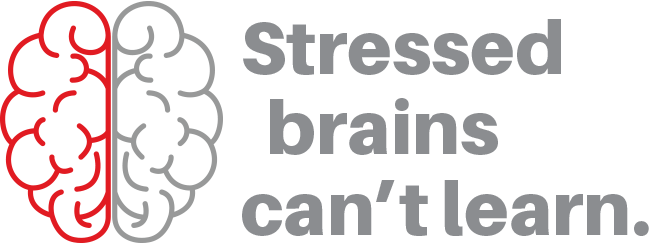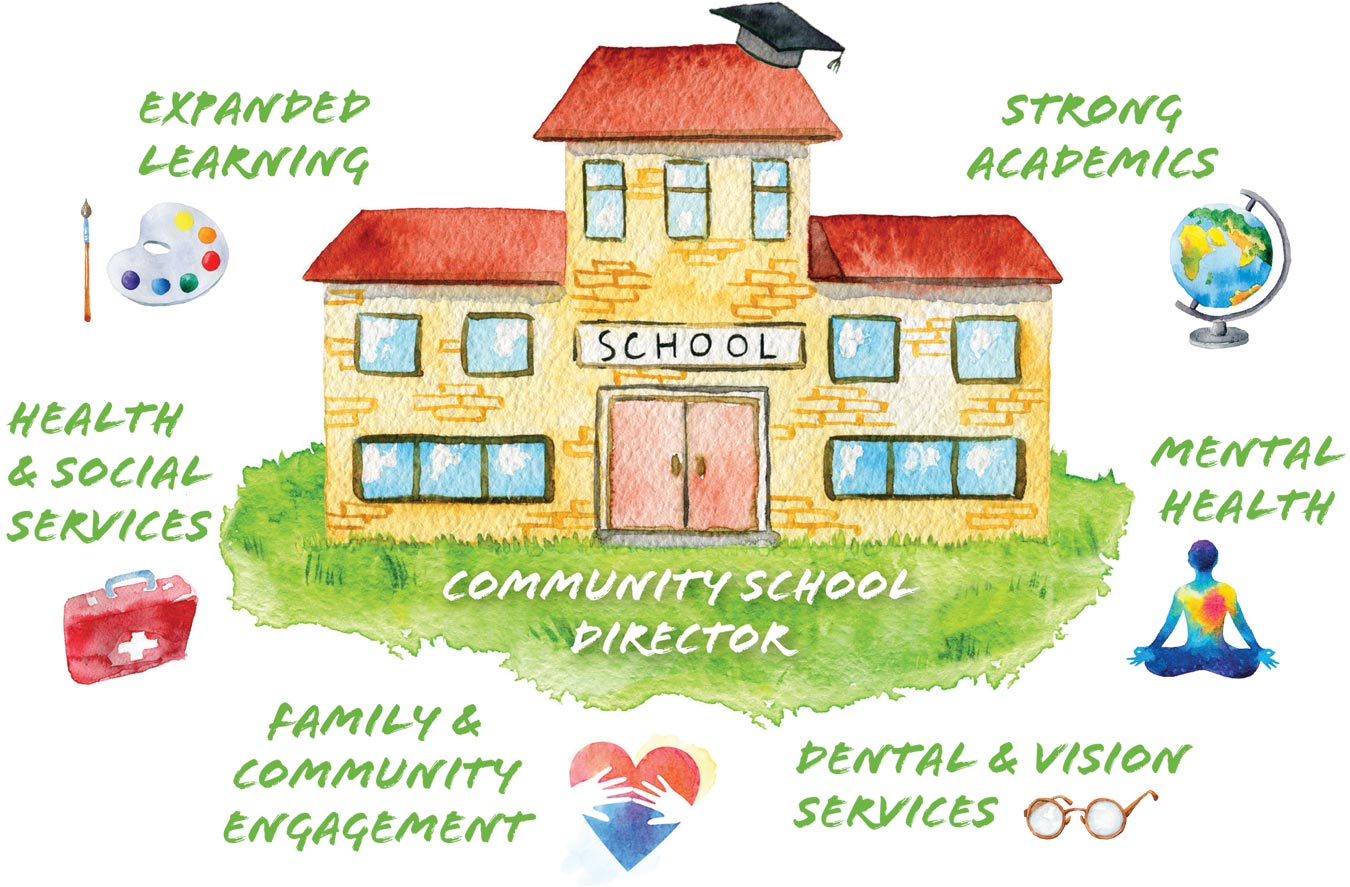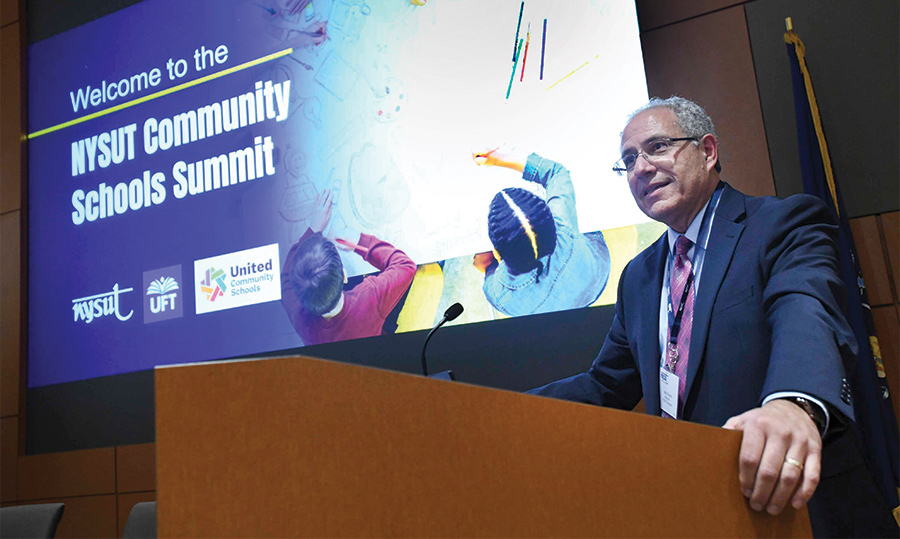[ Fighting for you ]
NYSUT making big push to expand community schools

That simple phrase was the “Aha!” moment a few years ago for Albany Public Schools TA President Laura Franz when she attended a presentation about bringing community schools into the Albany City School District.
“When you think of all the ways our students experience stress, that’s where I see community schools responding,” Franz told participants at NYSUT’s Community Schools Summit in October. “Whether it’s hunger, physical illness, mental health challenges, poverty — so many kids are in pain.”
“When we can reduce barriers, we know kids will thrive,” said United Federation of Teachers Vice President Karen Alford. “It’s a matter of addressing the educational, emotional, social and health issues that can stand in the way of learning.”
NYSUT hosted the Community Schools Summit to bring together teams of educators, administrators, school board members and parents who want to start or expand community schools in their districts.
“This is such a great mix of urban, suburban and rural districts,” NYSUT President Andy Pallotta said to the summit attendees. “It sends a powerful message that this strategy works for everyone — and that we need more funding.”
The summit offered panel discussions featuring community school advocates who shared tips to get started and lessons they learned along the way. Their top recommendation was to assess local needs by listening — with town halls, focus groups and surveys.
“Most of all, listen to the kids,” said Joseph DiCrescento, a principal at PS48 in the Bronx. “They’ll tell you what they need.”
“Don’t make assumptions,” Alford added. She explained how one school wrongly assumed that parents wanted to earn their GED, so they set up a program. “Nobody showed up,” she said. “In fact, they wanted help with resumes and finding jobs.”
Several panelists suggested starting small, perhaps with one initiative — rather than trying to create a comprehensive model.
“We started by taking on food insecurity in one school with a food pantry and Homework Diner,” said Rob Wood, Rome Teachers Association. “Now we’re Connected Community Schools in16 school districts.”

Rather than just focusing on remedial programming, participants suggested a wide array of enrichment offerings the students might not otherwise be exposed to, such as swimming, skating, chess, karate, yoga or making smoothies in a cooking class.
Sometimes it’s just a matter of reaching out to community partners to provide enrichment in art, music and dance — or a financial literacy class.
Alford suggested bringing in a cadre of retired teachers as after-school tutors.
Advocates emphasized the need to hire a community schools director or coordinator to access existing services, seek grants and figure out ways to problem-solve. Massena Community Schools Director Kristin Colarusso-Martin said she has successfully applied for grants that more than cover her salary and benefits every year.
In the next legislative session, NYSUT will be advocating for $100 million in categorical aid in the state budget specifically for community schools. These funds could potentially double the number of districts using the community school strategy in New York state.
